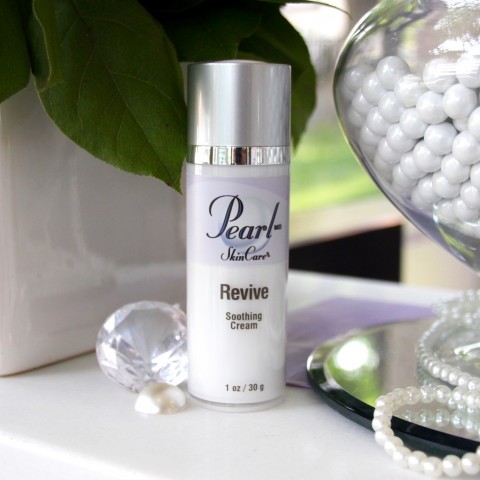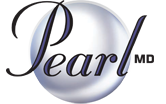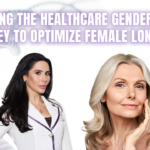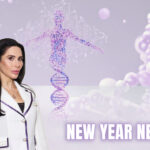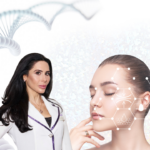By Souzan Michael, Fashion Magazine.

The journey to clear skin is a long one. Along the way, there are approximately three billion obstacles and bumps in the road. One of the most annoying? Rosacea. We spoke to Dr. Jennifer Pearlman of Pearl Rejuvenation, who is a total expert on the issue. Below, everything you ever wanted to know about rosacea and what you can do about red, inflamed, bumpy skin.
So, WTF is rosacea?
Medically, it’s called rosacea acne. The medical term implies that it’s not just redness, but that there are sensitivity papules associated with it. We tend to see that in more advanced stages.
Why is it happening?
With acne rosacea, the three causes are hormones, inflammation, or a chronic fungal infection. This is something like yeast all over our surface area. We think this is one of the factors of rosacea, [and] when we look at the approved studied treatments for rosacea, they tend to be those three things. If you’re on birth control, it can worsen rosacea [and] you might notice a change throughout your cycle. In women, depending on your cycle and symptoms, sometimes rosacea can flare in the second half before you bleed.
It can [also] be flared by certain triggers [like] diet, [specifically] hot or spicy foods, [and] alcohol. If you’re in a boardroom meeting and have to speak, emotional stress can trigger rosacea. Also heat. We know that chronic sun exposure can worsen rosacea.
Does rosacea discriminate?
If you look at a typical rosacea patient, it tends to be a mid-life woman. That’s because hormonal changes with menopause are a big trigger. We [also] see more rosacea's in fair skinned-individuals. The typical patient is a fair-skinned Caucasian woman.
How do I know if I have it?
It’s flushes of redness on the cheeks. It looks like a sunburn, [but] the flushing won’t just be when you’re embarrassed or stressed; it can be all the time. Think of the butterfly on the central face—the cheeks, the nose, and the chin. It can definitely evolve to the chest, as well. With progression, you start getting those papules. They look like acne, but it’s a different kind of acne; it’s different in appearance, distribution, and cause. With these small papules, they can be larger and more nodular. They’re very typical in a rosacea patient and often are on the cheek or on the corner of the nose. The dilated blood vessels, we call those telangiectasias, are flushing with increased blood flow to the face. Eventually, they dilate and are very apparent.
Can dudes have rosacea?
We see it more in men when alcohol’s involved. What can happen is that you get this large, bulbous appearance of the nose: like a Rudolph nose or a clown nose. It’s called rhinophyma [and] it’s a thickening and enlargement of the shape of the nose.
Any other symptoms I should know about?
Very commonly, you can have eye problems. With everyone who has rosacea's, I always look at their eyes. The telltale sign is their lashes. There’s a condition where your lashes will look misdirected. [It’s] called blepharitis [and] it’s an infection in the hair follicle. It’s extremely common in rosacea's patients, [and] it’s because of blepharitis that these people get styes and red eye.
Shit, so how do I treat it?
The most commonly prescribed treatment tends to be one that targets the fungal piece. Anti-fungals are typically prescribed for the management, [but] we know that the antifungal treatments are not efficient for advanced rosacea. In my practice, I tend to offer more than a prescription anti-fungal. What I’ve been able to do is use a natural anti-fungal coupled with other things that can calm and mask the redness. I have a product on our website called Revive. The active ingredient is quassia [and] it’s a natural anti-fungal. The product has a green tint, is hydrating, and treats the underlying causes of rosacea. We use it for patients who are red because of its anti-redness properties.
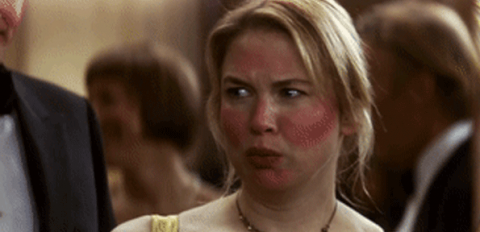
The journey to clear skin is a long one. Along the way, there are approximately three billion obstacles and bumps in the road. One of the most annoying? Rosacea. We spoke to Dr. Jennifer Pearlman of Pearl Rejuvenation, who is a total expert on the issue. Below, everything you ever wanted to know about rosacea and what you can do about red, inflamed, bumpy skin.
So, WTF is rosacea?
Medically, it’s called rosacea acne. The medical term implies that it’s not just redness, but that there are sensitivity papules associated with it. We tend to see that in more advanced stages.
Why is it happening?
With acne rosacea, the three causes are hormones, inflammation, or a chronic fungal infection. This is something like yeast all over our surface area. We think this is one of the factors of rosacea, [and] when we look at the approved studied treatments for rosacea, they tend to be those three things. If you’re on birth control, it can worsen rosacea [and] you might notice a change throughout your cycle. In women, depending on your cycle and symptoms, sometimes rosacea can flare in the second half before you bleed.
It can [also] be flared by certain triggers [like] diet, [specifically] hot or spicy foods, [and] alcohol. If you’re in a boardroom meeting and have to speak, emotional stress can trigger rosacea. Also heat. We know that chronic sun exposure can worsen rosacea.
Does rosacea discriminate?
If you look at a typical rosacea patient, it tends to be a mid-life woman. That’s because hormonal changes with menopause are a big trigger. We [also] see more rosacea's in fair skinned-individuals. The typical patient is a fair-skinned Caucasian woman.
How do I know if I have it?
It’s flushes of redness on the cheeks. It looks like a sunburn, [but] the flushing won’t just be when you’re embarrassed or stressed; it can be all the time. Think of the butterfly on the central face—the cheeks, the nose, and the chin. It can definitely evolve to the chest, as well. With progression, you start getting those papules. They look like acne, but it’s a different kind of acne; it’s different in appearance, distribution, and cause. With these small papules, they can be larger and more nodular. They’re very typical in a rosacea patient and often are on the cheek or on the corner of the nose. The dilated blood vessels, we call those telangiectasias, are flushing with increased blood flow to the face. Eventually, they dilate and are very apparent.
Can dudes have rosacea?
We see it more in men when alcohol’s involved. What can happen is that you get this large, bulbous appearance of the nose: like a Rudolph nose or a clown nose. It’s called rhinophyma [and] it’s a thickening and enlargement of the shape of the nose.
Any other symptoms I should know about?
Very commonly, you can have eye problems. With everyone who has rosacea's, I always look at their eyes. The telltale sign is their lashes. There’s a condition where your lashes will look misdirected. [It’s] called blepharitis [and] it’s an infection in the hair follicle. It’s extremely common in rosacea's patients, [and] it’s because of blepharitis that these people get styes and red eye.
Shit, so how do I treat it?
The most commonly prescribed treatment tends to be one that targets the fungal piece. Anti-fungals are typically prescribed for the management, [but] we know that the antifungal treatments are not efficient for advanced rosacea. In my practice, I tend to offer more than a prescription anti-fungal. What I’ve been able to do is use a natural anti-fungal coupled with other things that can calm and mask the redness. I have a product on our website called Revive. The active ingredient is quassia [and] it’s a natural anti-fungal. The product has a green tint, is hydrating, and treats the underlying causes of rosacea. We use it for patients who are red because of its anti-redness properties.
What happens if rosacea is left untreated?Rosacea’s progressive. I’d say rhinophyma is the worst and most advanced stage of rosacea. It’s the stage where you have the nodules and the papules and the acne forming. It’s that chronic, deeply flushed redness. It’s the dilated capillaries that you get all over your skin. You might [also] get reoccurring eye infections with your lashes. It becomes a very involved condition.
There’s [also] a variant of rosacea called perioral dermatitis. A woman who’s had rosacea her whole life might have a breakout of this oral dermatitis. They look like little pimples around the mouth, the eyes or on the cheeks. [But] it’s usually [just] a flare.
Originally published as "Literally everything you need to know about rosacea", Fashion Magazine.
There’s [also] a variant of rosacea called perioral dermatitis. A woman who’s had rosacea her whole life might have a breakout of this oral dermatitis. They look like little pimples around the mouth, the eyes or on the cheeks. [But] it’s usually [just] a flare.
Originally published as "Literally everything you need to know about rosacea", Fashion Magazine.
